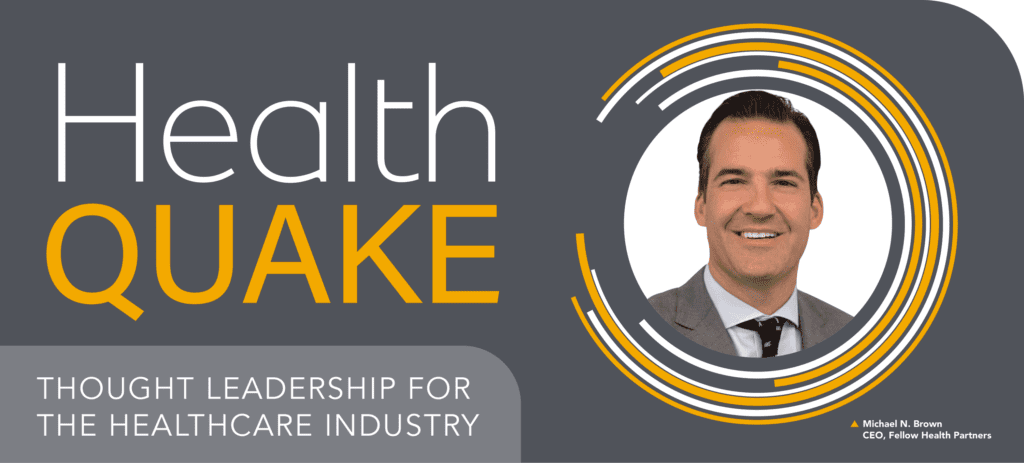
On Jan. 1, 2022, the No Surprises Act became law. It was designed to close a loophole in medical billing that had frustrated (and sometimes impoverished) patients for years. Designed to prevent patients from receiving a “surprise” bill, the law set restrictions on doctors who treated a patient and billed them without informing the patient that they didn’t participate with the patient’s insurance. This had become an ongoing issue in emergency treatment.
Most people believed the bill would do its job and take care of the issue. But it hasn’t worked out that way. It appears to have created more confusion. Before getting into that, here’s some background.
Prior to the new legislation, a legal loophole could put insured patients at risk of very high, unexpected medical bills that weren’t covered by their insurance. This was because of the way that doctors and insurance companies contracted with each other. If a doctor or hospital participated with an insurance carrier (let’s say Anthem just as an example), a patient who had Anthem insurance would be covered for their medical bills. The hospital and doctors were “in-network” with Anthem.
If the patient ended up in emergency and had to have surgery on a Saturday night, everything would be covered by insurance, except for standard copays and deductibles. However, if they ended up in an out-of-network hospital or being treated by out-of-network doctors who didn’t take Anthem insurance, the patient could later be surprised by big bills that weren’t covered, which meant the patient had to pay out of pocket. This could happen even if the patient was unconscious and didn’t know what was going on.
To put this in perspective, more than 15% of insured adults who received an unexpected medical bill between 2018 and 2020 said it was from an out-of-network provider.
The new legislation says that doctors who are out-of-network can’t “balance bill” patients unless they obtain formal written consent before treating the patient at an in-network facility.
The legislation also stipulates that Self Pay patients must be provided a Good Faith Estimate prior to services being rendered in any setting – office or facility. Both circumstances require that paperwork is provided to patients within a specific time frame mandated by HHS (Health and Human Services) so that patients have ample time to weigh their options.
None of this applies to those with “government” insurance such as Medicare or Worker’s Compensation, which are governed by different rules to avoid surprise bills.
Not surprisingly, there has been a lot of pushback by medical services that are in the grey area of legislation. Air ambulances and some emergency vehicle services have lobbied against the legislation, saying that the suggested rates allow insurance companies to control their pricing and that they have no free-market pricing ability, which affects their ability to stay in business.
Some medical specialists say that the new law will restrict their ability to provide necessary treatments. Others are concerned that the issue can become confusing for patients who might not seek treatment from a highly specialized out-of-network doctor because the paperwork gets in the way. There is a feeling among some that this is the thin edge of the wedge in taking pricing power away from physicians who have chosen to stay truly independent – because the bill gives insurance companies too much power to set prices and payments based on the payment formulas.
Most of the resistance is about the way no-surprises billing disputes are going to be resolved. The American Medical Association, 16 state medical associations, and the American Hospital Association united to file a legal challenge against the dispute process, specifically the rule that “unfairly empowers insurers” to set rates – the same issue that is bothering air ambulance operators. Dustin Corcoran, CEO of the California Medical Association says that if the law is allowed to stand as it is now, “patients and physicians will pay the price.”
While this is being settled, here are some things doctors and hospitals must consider. Here’s a partial summary of key items:
- If the patient has “government” insurance such as Medicare, Medicaid, Veterans, No Fault, Worker’s Comp, etc. – nothing changes.
- If you are an out-of-network physician, you must get voluntary consent (Notice and Consent Waiver) from patients before performing procedures at an in-network facility. Self-pay patients must be provided a Good Faith Estimate of the cost. The different legal forms for consent might cover a time range from more than 72 hours before the visit right up to 3 hours before seeing a patient if the appointment is made the same day. Make sure you know these rules and have the forms ready for signature.
- You can’t use a Notice and Consent Waiver for any of the following: Emergency services; “Unforeseen urgent medical needs” that result when non-emergent care is furnished; “Ancillary Services” which covers a range from emergency medicine, anesthesiology, pathology, radiology, and neonatology, items and services provided by assistant surgeons, hospitalists, and intensivists; Diagnostic services including radiology and lab services.
- A standard Consent form (and updates) can be found here. There are rules about the number of languages the form must be available in, as well.
- Enforcement will come from a number of sources including the states, HHS, OPM, and others, depending on jurisdiction.
- Although this is not the last word and things continue to change, you can learn more here. It’s up to you to stay up to date on this evolving category.
If you are out-of-network and do your billing in-house, it’s critical that your billing team knows all these rules and stays on top of the changes as legal challenges and updates evolve. If you outsource, you might want to make sure your billing company is totally up to date during this evolution.